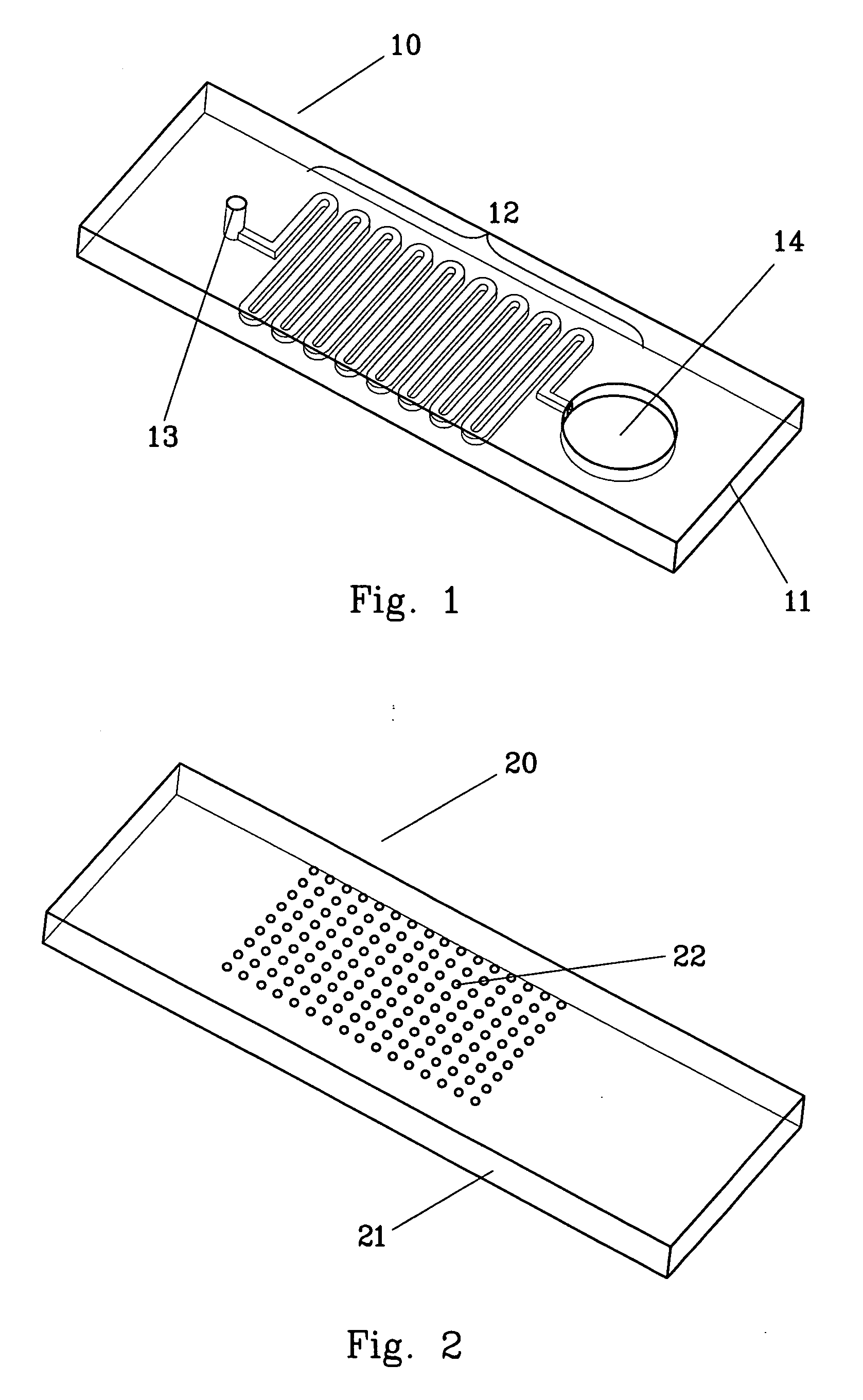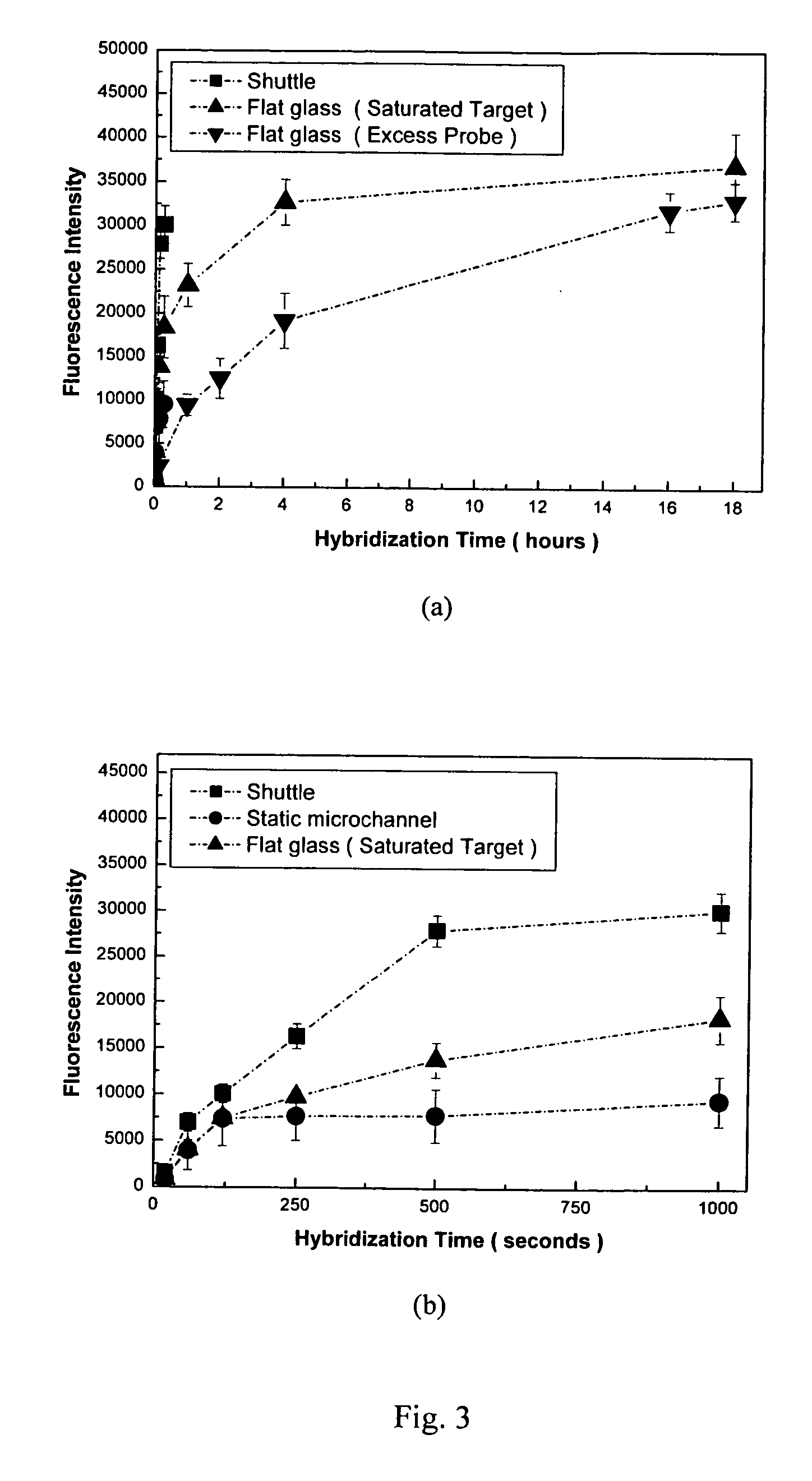Microarray biochemical reaction device
a biochemical reaction and microarray technology, applied in bioreactors/fermenters, specific use bioreactors, laboratories, etc., can solve the problems of systematic hybridization bias, large sample and reagent volumes required for conventional dna-dna hybridization reaction, slow diffusion kinetics, etc., and achieve the effect of shortened reaction time for dna hybridization
- Summary
- Abstract
- Description
- Claims
- Application Information
AI Technical Summary
Benefits of technology
Problems solved by technology
Method used
Image
Examples
Embodiment Construction
Preparation of Microarray Biochemical Reaction Device
[0031] A commercial CO2 laser scriber (M-300, Universal Laser Systems, USA) is used to engrave the PMMA substrate to fabricate a microtrench. The microtrench pattern is designed using CorelDraw (Corel) and then sent to the laser scriber for direct machining onto the PMMA substrate. FIG. 1 shows the structure of a microtrench prepared in a substrate according to this invention. As shown in this figure, 10 represents structure of the microtrench and 11 represents the substrate. In this embodiment, the substrate is a PMMA plate. Material of the substrate is not limited to PMMA. Other materials such as plastics, resin, glass, ceramics or other suited material may be used in this invention. 12 is a serpentine microtrench prepared in the substrate 11. The microtrench 12 has straight and parallel sections and bending sections, forming a continuous trench. Pattern of the microtrench 12 is of course not limited to any particular form. In...
PUM
| Property | Measurement | Unit |
|---|---|---|
| diffusion time | aaaaa | aaaaa |
| diffusion length | aaaaa | aaaaa |
| time | aaaaa | aaaaa |
Abstract
Description
Claims
Application Information
 Login to View More
Login to View More - R&D
- Intellectual Property
- Life Sciences
- Materials
- Tech Scout
- Unparalleled Data Quality
- Higher Quality Content
- 60% Fewer Hallucinations
Browse by: Latest US Patents, China's latest patents, Technical Efficacy Thesaurus, Application Domain, Technology Topic, Popular Technical Reports.
© 2025 PatSnap. All rights reserved.Legal|Privacy policy|Modern Slavery Act Transparency Statement|Sitemap|About US| Contact US: help@patsnap.com



